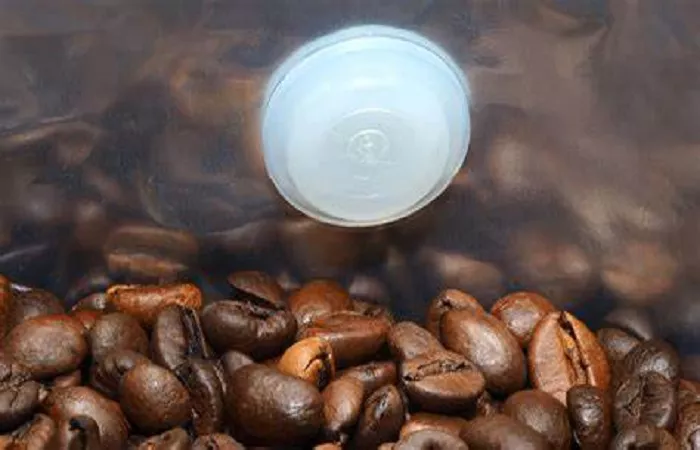Starbucks is one of the most recognizable coffee brands in the world, and its cold brew has gained a loyal following due to its smooth, rich flavor. Many coffee enthusiasts wonder what type of beans Starbucks uses for its cold brew and how the brewing process affects the final taste. Unlike traditional hot brewing methods, cold brew relies on time rather than heat to extract flavors, resulting in a less acidic and more mellow profile. Starbucks carefully selects its coffee beans to ensure the best possible cold brew experience.
The Coffee Beans Behind Starbucks Cold Brew
Starbucks uses a blend of high-quality Arabica beans for its cold brew, specifically chosen for their flavor characteristics when steeped in cold water for an extended period. The company does not publicly disclose the exact origin or blend composition, but industry experts and barista insights suggest that the beans are likely sourced from Latin America and Africa. These regions produce beans with bright, fruity, and chocolatey notes that work well in cold brew.
The beans used in Starbucks cold brew are medium to dark roasted, which helps develop deep, caramelized flavors without excessive bitterness. Since cold brewing naturally reduces acidity, Starbucks does not need to rely on ultra-dark roasts to balance the taste. Instead, the focus is on achieving a smooth, naturally sweet profile with subtle hints of cocoa and nuts. The grind size is also crucial—coarse grounds are used to prevent over-extraction, which could make the coffee taste muddy or overly strong.
The Science of Cold Brew Extraction
Cold brew coffee is made by steeping coffee grounds in cold or room-temperature water for 12 to 24 hours. Unlike hot brewing methods, which quickly extract flavors (and acids) from the beans, cold brewing relies on a slow, gentle process. This results in a beverage that is up to 67% less acidic than hot-brewed coffee, according to a study published in Scientific Reports. Lower acidity makes cold brew easier on the stomach and more appealing to people with acid sensitivity or digestive issues.
The chemical composition of cold brew differs from that of hot coffee. Heat accelerates the extraction of compounds like chlorogenic acids, which contribute to bitterness and acidity. In contrast, cold water primarily extracts sugars, oils, and milder flavor compounds, leading to a naturally sweeter and smoother cup. Caffeine content in cold brew can be higher than in hot coffee if a higher coffee-to-water ratio is used, but Starbucks typically serves a balanced version that is strong but not overpowering.
Why Starbucks’ Cold Brew Stands Out
Starbucks’ cold brew is known for its consistent quality, which comes from strict sourcing and brewing standards. The company uses a proprietary blend that is optimized for cold extraction, ensuring that each batch has the same rich, velvety texture. Unlike some smaller coffee shops that might use single-origin beans for cold brew, Starbucks opts for a blend to create a more balanced and versatile flavor profile.
Another factor that sets Starbucks apart is its nitrogen-infused cold brew, which adds a creamy, Guinness-like texture without the need for dairy. The nitrogen bubbles create a silky mouthfeel and enhance the natural sweetness of the coffee. This innovation has made Starbucks a leader in the ready-to-drink cold brew market.
Health Benefits of Cold Brew Coffee
Because cold brew is less acidic, it is often better tolerated by people with acid reflux or sensitive stomachs. The lower acidity also means that cold brew is less likely to cause tooth enamel erosion over time compared to hot coffee. Additionally, the slow extraction process preserves antioxidants, which have been linked to reduced inflammation and improved heart health.
Caffeine levels in cold brew can vary, but Starbucks’ standard cold brew contains about 200 mg of caffeine in a grande (16 oz) serving, which is slightly more than a hot brewed coffee of the same size. However, the smoothness of cold brew can make it easier to drink in larger quantities without the jittery side effects that some people experience with hot coffee.
How to Replicate Starbucks Cold Brew at Home
While Starbucks keeps its exact cold brew recipe a secret, coffee lovers can experiment with their own versions using high-quality Arabica beans. A coarse grind is essential to prevent over-extraction, and a steeping time of 18 to 20 hours at room temperature usually yields the best results. Filtered water is recommended to avoid any off-flavors from impurities.
For those who want a nitro-style cold brew at home, a whipped cream dispenser with nitrogen cartridges can be used to achieve a similar creamy texture. However, the simplest method is to brew a strong batch of cold brew and serve it over ice with a splash of milk or a flavored syrup for added sweetness.
Conclusion
Starbucks’ cold brew stands out due to its carefully selected Arabica beans, precise brewing method, and innovative serving styles like nitro cold brew. The company’s focus on quality and consistency ensures that every cup delivers a smooth, flavorful experience with lower acidity than traditional hot coffee. Whether enjoyed black or with a splash of cream, Starbucks cold brew remains a popular choice for coffee lovers seeking a refreshing and stomach-friendly caffeine boost. Understanding the science behind cold brew helps explain why it tastes different from iced coffee and why Starbucks’ approach has been so successful. For those looking to enjoy cold brew at home, experimenting with different beans and brewing times can lead to delicious results that rival the coffee giant’s signature drink.
Related topics:
Do Coffee Beans Expire if Unopened?


